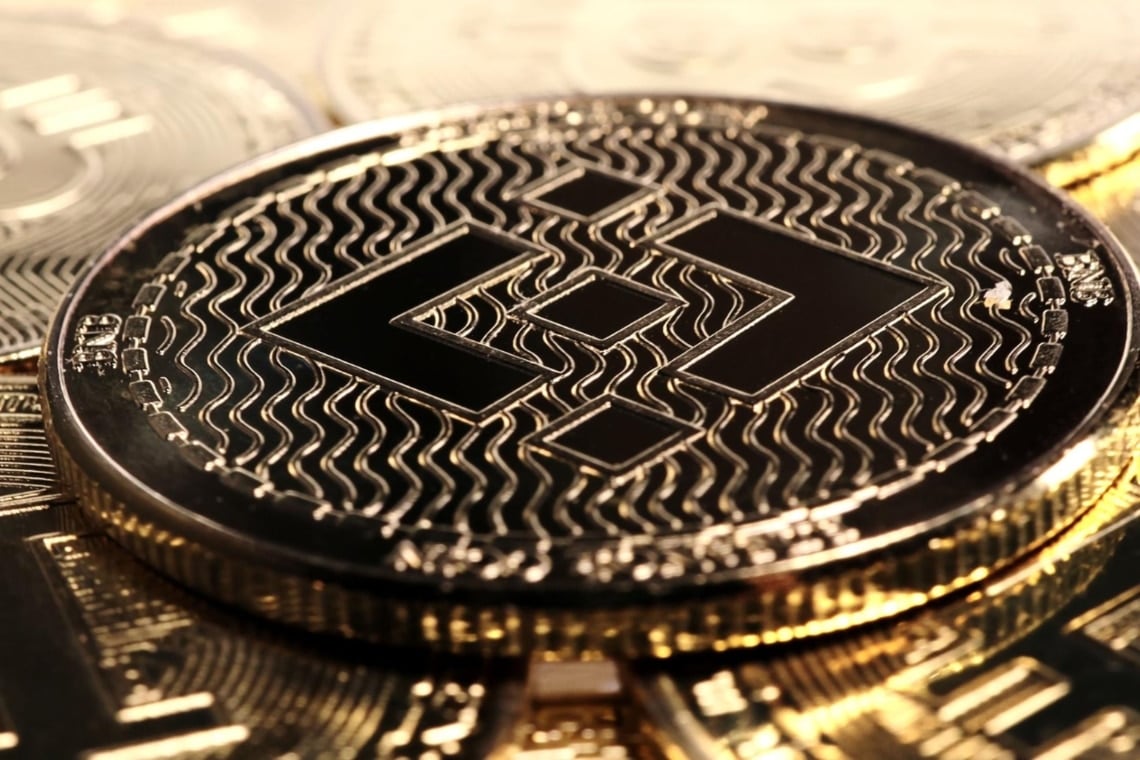Doubts about the possible resilience of Binance have obviously also affected the market price of the cryptocurrency BNB, or Binance Coin.
Summary
The price trend of Binance Coin (BNB)
Over the past seven days, BNB has lost 13%, against, for example, the substantial stagnation of BTC and ETH.
Until Wednesday, 14 December, the price of BNB was lateralizing similarly to that of the two major cryptocurrencies, but starting on Thursday it went into a bit of a slump.
In fact from $275 on Wednesday it fell to $228 on Saturday, accumulating a loss of 17 % in just three days.
Yesterday, however, there was a small rebound that brought the price back to around $250 or so, thanks to which the weekly loss was reduced to 13%.
It is worth noting, however, that among the major cryptocurrencies by market capitalization BNB is by far one of those that had lost the least during 2022.
Its current price is 64% below last year’s absolute highs, while in contrast, for example, this percentage rises to 75% for BTC and ETH.
It is also higher than the annual low of mid-June, when it fell as low as $214.
The fact is that in addition to the rebound in July and early August, followed by a decline, the price of BNB made another rebound in October, so that by early November, before the FTX fiasco, it had climbed back above $350.
From mid-June to early November it was up a resounding +64%, like no other top cryptocurrency.
The current difficult phase is a direct consequence of FTX’s collapse, even though it occurred at two separate times. The first was right in mid-November, during the FTX collapse, with the price of BNB dropping to $250. The second was last week, due to doubts about the resilience of Binance.
Doubts about the resilience of Binance Coin (BNB)
BNB is directly linked to Binance, so any problems at one also affect the other.
Binance’s problems really only relate to the fear that it may come to a similar end as FTX.
In fact, it is worth pointing out that so far it has not shown any concrete and obvious signs of breaking down. On the contrary, it has suffered heavy outflows of funds from its wallets in recent days, due to a sort of “counter rush” on the part of its users, and it has held up very well.
Not only has the exchange not been forced to suspend withdrawals, but there are no major slowdowns in disbursements either.
The co-founder and CEO himself, Changpeng CZ Zhao, called this a “stress test” that absolutely passed successfully.
However, despite the fact that there are no concrete and obvious signs of possible trouble, fears remain.
It all stems from the so-called Proof-of-Reserves, which is the evidence provided by Binance and other exchanges, regarding funds on hand to support any withdrawals.
After withdrawals were suspended on FTX in November due to a lack of sufficient funds to be able to satisfy all withdrawal requests, many users of centralized exchanges began to fear that other exchanges might also be in similar situations.
The funds of the exchanges
The funds that customers deposit on a crypto exchange should all be withdrawable at any time. This means that, in theory, all exchanges should have a liquid reserve of an amount equal to or greater than the value of the funds held on deposit on behalf of their customers.
Those funds are not really owned by the exchanges, whereas they have full ownership of the funds collected, for example, in the form of transaction fees.
Unfortunately, there are many exchanges that not only custody their clients’ deposits, but, like FTX, spend clients’ funds as their own.
Since the collapse of FTX, many exchanges have competed to prove that they have sufficient funds in their coffers to cover all of their clients’ deposits.
They have basically done this in two ways: by disclosing the public addresses on which they store on-chain tokens, and by having audits done by auditing firms.
Binance’s reserves
Currently on-chain Binance is reported to have funds of about $55 billion. This count obviously excludes fiat currencies, because they are not on-chain.
In theory this is enough funds to cover all customer deposits, but that figure alone is not enough to sweep away all doubt.
In fact, there is no certainty that those funds serve the exchange to cover only and exclusively customer deposits. Should Binance instead be forced to use those funds to cover other debts as well, it may not have enough to cover all customer deposits.
For this reason, the exchange asked a specialized company to do an audit to certify its soundness. That audit was done and published at the beginning of the month, and it actually revealed that the company had hedges equal to 101% of the value of deposits.
The problem is that last week the company that did that audit decided to get out of the crypto business, and it removed from its website all the audit reports it had done for various crypto companies.
Some people interpreted this move as withdrawing the audit for fear that it was incorrect, and that’s where the fears about Binance’s possible insolvency started.
Instead, Binance has continued to be insolvent, with no apparent problems, and on-chain reserves have held up. It is worth noting that before the panic set in, those reserves amounted to more than $62 billion, so they have since shrunk by $7 billion. All this suggests that the stress test of Binance’s “bank run” can be considered as successfully passed.




